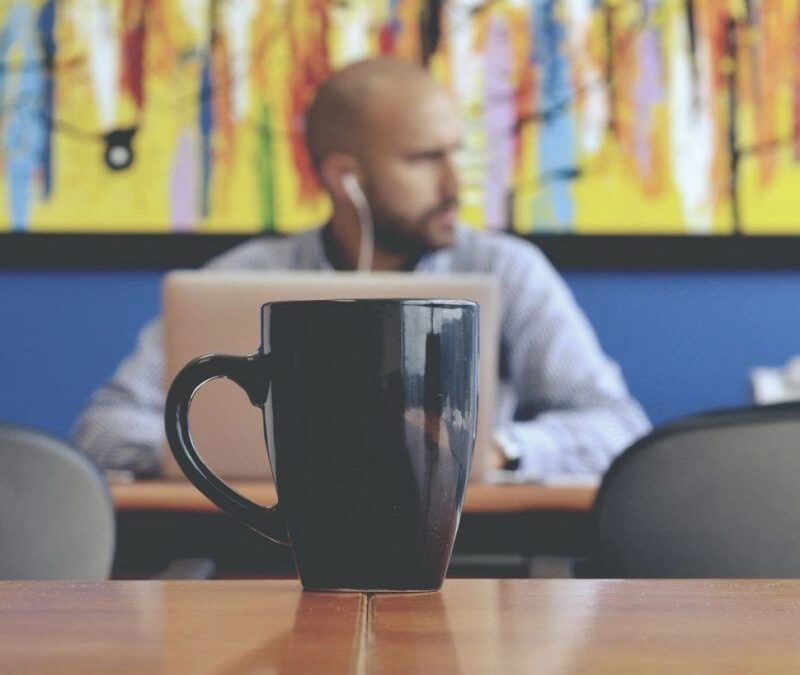
Art works: how art in the office boosts staff productivity
Contrary to what your boss might say, being distracted at work is not always a bad thing. If the object of your distraction is a work of art, it can actually boost productivity, lower stress, and increase wellbeing.
This is according to Dr. Craig Knight, who has studied the psychology of working environments for 12 years at the University of Exeter, where he heads a research group called Identity Realisation (IDR).
“There is a real tendency to opt for sanitized, lean workspaces, designed to encourage staff to just get on with their work and avoid distraction,” he explains. But there isn’t a branch of science in the world which believes this approach boosts productivity or makes for happier workers, according to Knight. “If you enrich a space people feel much happier and work better; a very good way of doing this is by using art.”
It is certainly a philosophy that Deutsche Bank is on board with. The German investment bank has the biggest collection of corporate art in the world, with some 60,000 artworks across 900 offices in 40 countries. There is an interactive app that tells employees more about the works they are looking at and an “Arthothek”, a place people can stop by and ask an expert for advice when it comes to choosing artwork for the office. The bank also hosts talks by artists.
12 Harmonics by Keith Tyson in the Deutsche Bank London reception. Photograph: Deutsche Bank
“It isn’t often bankers get to talk to artists,” says Friedhelm Hütte, global head of art at Deutsche Bank. “Art offers a window into the social, political and economic aesthetics around the world and this makes it a good inspirational fit for our business because we live on developing new ideas for clients and reacting to what is happening in the world.”
The bank likes to buy work from contemporary artists, with a focus on original drawings and photographs. “We like things which are innovative and spontaneous, which capture that moment when an idea first becomes visible,” explains Hütte.
“I don’t believe the art makes every person who looks at it inherently more creative but it gets them involved on a more intellectual level about innovation around the world.”
Knight and his team have conducted studies into the most effective work environments by asking participants to do an hour’s work in four different types of office space:
- Lean: containing only the things necessary to do the tasks.
- Enriched: featuring art and plants which were already arranged.
- Empowered: the same art and plants but participants could choose where to put them.
- Disempowered: participants could arrange the art and plants themselves – but the experimenter then undid these personal touches and reverted to the enriched layout.
The team found that people who worked in the enriched office worked about 15% quicker than those in the lean office and had fewer health complaints – this figure then doubled for people who worked in the empowered space. As for those who’d seen their personal touches undermined; their productivity levels were the same as those in the lean space.
“In 12 years we have never found that lean offices create better results, and the more involved people are in the enrichment process, the more they are able to realize a part of themselves in the space,” explains Knight.
He is emphatic that by the art he doesn’t mean so-called “motivational posters”, which say things like “there is no I in team” or “whatever the problem, be part of the solution”, because these don’t work at all.
Art is a way of retaining staff and encouraging them to be in the office, at a time when people increasingly want to work remotely, says Alex Heath, managing director at International Art Consultants, which advises workplaces on art.
“Some companies consciously use art as part of their retention strategy,” he says. “Aesthetic in the truest sense means energy-giving which is what a workplace needs, rather than a bland, industrial environment which can be more like giving workers a dose of anesthetic.”
The company has helped number crunchers at rating agency Moody’s to reap the benefits of having art in the workplace. An art committee of employees came up with the strapline “making sense of what you see” and the offices were decked out with photography which requires careful examination and decoding.
Elsewhere, Heath says they have commissioned bright and bold contemporary pieces for waiting rooms or recreational spaces because they make for good talking points, while sculptures and huge textile works with acoustic properties are a good fit for deadening the sound in clattering marble foyers.
Kinetic artworks and light installations are popular with some corporations, says Heath; as they can inject dynamism into very strait-laced environments.
Artist Dominic Harris specializes in interactive art using lights and video and his work features in a number of workplaces (you might have seen some of his commercial commissions in places such as Itsu and Snog).
“People spend most of their lives at work and being in an office can become very routine, but if there is interactive art around the place it offers an ongoing sense of intrigue and engagement,” he says.
Harris and his studio, Cinimod, often create works that react to passersby; a wall of butterflies that beat their wings, or a cascading virtual waterfall you can dip your hands into, for example.
“A momentary distraction is definitely not a bad thing in the workplace. Art has historically always been about escape, and we all need is an escape sometimes.”
Credit: written by Kirstie Brewer @ the Guardian https://www.theguardian.com/careers/2016/jan/21/art-works-how-art-in-the-office-boosts-staff-productivity


